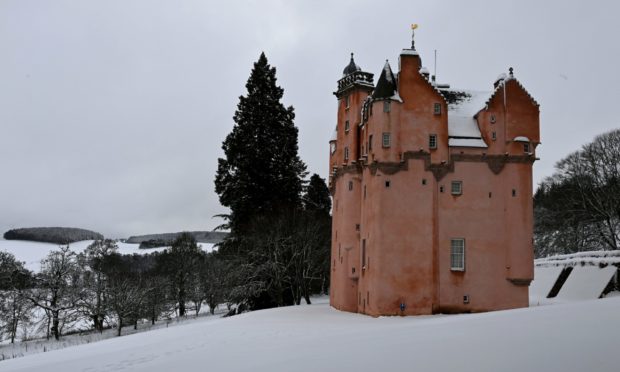Historians have unearthed the hidden defence capabilities of the north-east castle said to have caught the imagination of Walt Disney.
The unmistakable pink walls of Craigievar Castle, near Alford, are believed to have provided the inspiration for the castle in Cinderella.
New studies have revealed lost walls and fortifications that hint at a violent history far removed from any fairy tale, which were “useful during a defensive attack, allowing fire to rain down from above”.
The project, carried out by the National Trust for Scotland, used 3D technology, past archaeological studies and plans and watercolour paintings.
As part of the initiative, the 16th century “barmkin” walls have been rediscovered and mapped out.
Now a rarity across historical sites in Scotland, they would have drastically altered the seven- storey tower’s appearance, turning it into a well-guarded courtyard.
Visitors are now able to walk the defensive lines and discover another chapter of the castle’s incredible history.
Chartered surveyor, Annie Robertson, explained the crucial role the new discovery played in centuries past.
She said: “Access was often limited to one main entrance with an iron or timber gate, which would be guarded by a gatekeeper to make sure that any trouble was firmly quashed outside the walls.
“There was a wall-walk at the head, giving the watchmen a better vantage for monitoring the surrounding approach. It was also useful during a defensive attack, allowing fire to rain down from above.”
Built in 1576 and surrounded by groomed gardens and miles of woodland trails, Craigievar is one of the country’s most famous tower houses and regarded by experts as a perfect example of the Scottish Baronial style.
Daniel Rhodes, a National Trust Scotland archaeologist, said: “To be able to take our archaeological knowledge and recreate the past for our visitors to enjoy is a fantastic opportunity.
“It must have been a bustling courtyard often full of livestock and people.
“A real comparison to today’s fairytale beauty.”
The barmkin walls are a rarity, with Leith Hall near Huntly among few remaining examples.
Nearly all barmkins fell victim to changing tastes and fashions, or were demolished to accommodate more wings and rooms.
